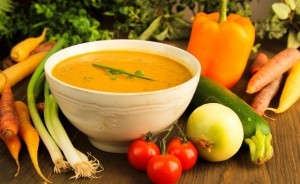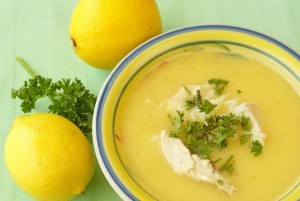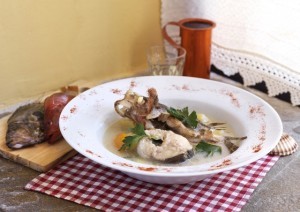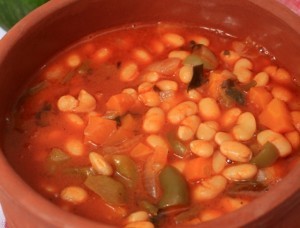Soups are always favoured in the heart of winter, they are served as starters or as a meal, always deliciously hot and healthy, they heat us up in the cold days filling us up with energy. There are various combinations of soup flavours and they are fairly easy to make which will provide your body with a number of vitamins shielding it from the seasonal flu. Recipes vary from simple soups with vegetables, meat, chicken, fish and pulses that are considered beneficiary for your healthy diet!
– Green…
Vegetable soups happen to be one of the most healthy soups you can choose from. If you are on a diet or a vegetarian then you must love soups as they are packed with nutrients that will boost your immune system. You simply boil your favourite veggies in salted water, add olive oil and tada… there you go, you have got your chef d’oeuvre in your bowl! Serve your soup watery sprinkled with some croutons for extra taste or blend its ingredients and make flavourful creamy ones.
– Classic meat…
Particularly energizing, ideal to prevent seasonal flues or recover from a cold, meat soups usually are made with veal, carrots, potatoes, celery, onions, all cut into big chunks. Start by cooking the meat (as it requires more time) and when it starts getting tenderer add the vegetables, olive oil and season at choice. When everything has boiled, remove the meat and vegetables, strain the broth to remove any bones and pour back the broth, meat and vegetables into your pot. Now this is the moment where you must add either rice, trachana (a granular grain product made with either semolina/wheat flour/bulgur/cracked wheat mixed with either milk/yogurt/buttermilk), kritharaki (orzo) or any other pasta you prefer to complete your soup!
The previous procedure also applies if instead of veal you use chicken, turkey or even rooster. Try to find organic or free-range poultry and drizzle your soup with avgolemono (thick egg and lemon sauce).
– Special Greek one…
Mageiritsa is a traditional Greek soup with a distinct flavour and taste. It is a dish served after the Resurrection at midnight following the evening of Easter Saturday and it is essentially the first meat-eating recipe after the Lent period. It is made with finely chopped lamb entrails, fresh onions, dill and lettuce. As the finishing boil is reached, rice is added and then avgolemono is mixed in. If you aren’t too keen about entrails, there are variations with chicken, mushrooms or artichokes that promise to tickle your taste buds.
A long lasting greek custom is to eat patsa soup after having a long night out drinking and partying or working hard. This soup is considered good for soothing your stomach. It is made with beef feet and stomach and boiled for 3-4 hours in a deep large pot seasoned with salt. After completing this step the broth is drained, bones are extracted and placed again in the pot before serving. Patsa soup is served sizzling hot and you can season by choice with skordostoumpi (mashed garlic cloves in vinegar) and hot pepper.
– Fish…
The seas around Greece are also renown for the tasty fish they have to offer. Either you wish to prepare your own home made fish soup or prefer to savour it at a seaside taverna you will enjoy its unique flavour. Kakavia is considered as THE traditional Greek fish soup; the fishermen’s soup! The soup’s broth used to be made by simply boiling in seawater various little fish (bream, angler fish or redfin perch, scorpaena known as scorpionfish) caught by the fishermen. To complete their recipe they used to add a cup of olive oil and lots of lemon juice making a rich creamy and fulfilling soup! The fishermen cooked their meal in their little boats or at seashore while they picked the fish caught by their nets. The long lasting recipe has evolved in our days as vegetables such as carrots, celery, zucchini, onions, potatoes and fresh tomatoes have been added.
– Pulses…
Pulses have always been essential to the Mediterranean diet; they are rich in protein, iron and calcium and Greeks favour this product especially during times when meat consumption was minimised due to its high cost. Beans from Prespa, lentils from Voio Kozani and Eglouvi Lefkada, chickpeas from Larisa or Grevena are just some of the renowned pulses that Greek motherland produces.
Pulses also make great soups; either with tomato or with lemon, they are wonderfully accompanied by feta cheese, olives, pickles, cured fish (anchovy, herring) or salami. Bean soup (known as fasolada in Greece) in particular is a delicious recipe and must be savoured when in Greece. It takes part in the weekly family menu, especially during the winter season and is greatly appreciated in various places in Greece, such as Pelion where they serve bean soup with sauteed sausage as a side dish or even in the soup itself!
Source: visitgreece.gr
Ask me anything
Explore related questions









